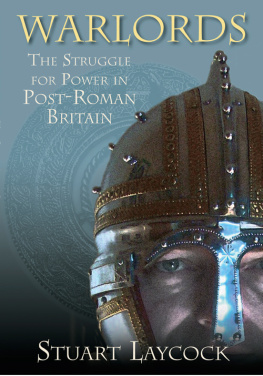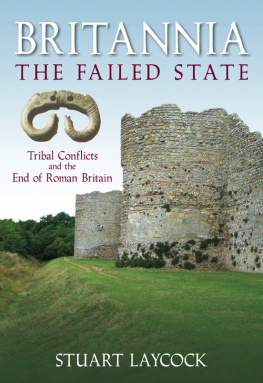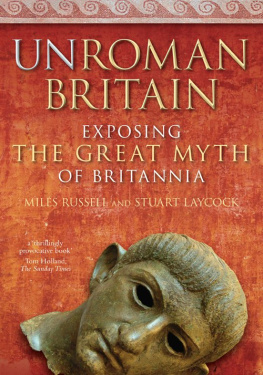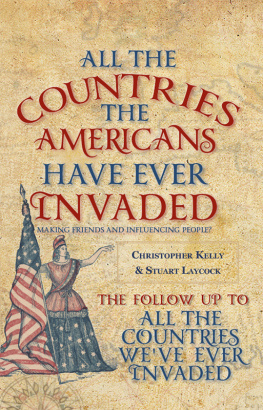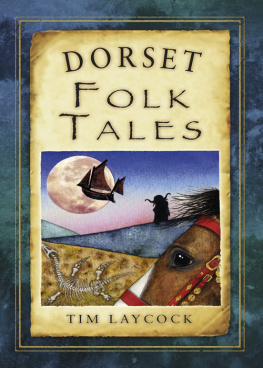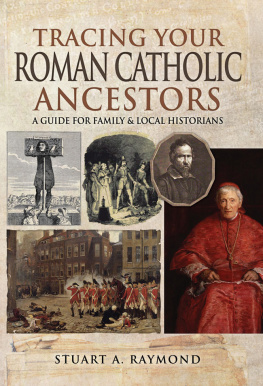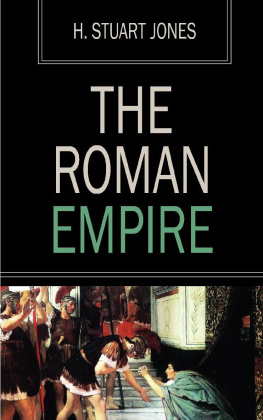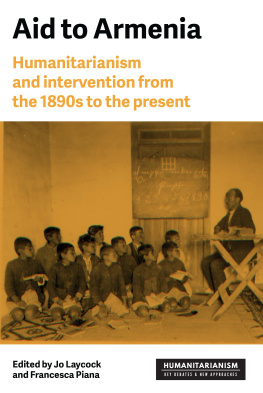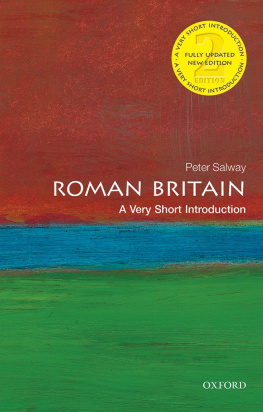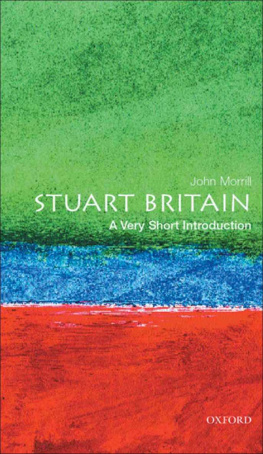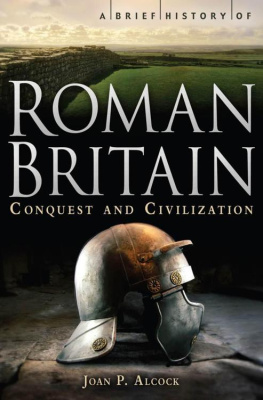Stuart Laycock - Warlords: The Struggle for Power in Post-Roman Britain
Here you can read online Stuart Laycock - Warlords: The Struggle for Power in Post-Roman Britain full text of the book (entire story) in english for free. Download pdf and epub, get meaning, cover and reviews about this ebook. year: 2011, publisher: The History Press, genre: Religion. Description of the work, (preface) as well as reviews are available. Best literature library LitArk.com created for fans of good reading and offers a wide selection of genres:
Romance novel
Science fiction
Adventure
Detective
Science
History
Home and family
Prose
Art
Politics
Computer
Non-fiction
Religion
Business
Children
Humor
Choose a favorite category and find really read worthwhile books. Enjoy immersion in the world of imagination, feel the emotions of the characters or learn something new for yourself, make an fascinating discovery.
- Book:Warlords: The Struggle for Power in Post-Roman Britain
- Author:
- Publisher:The History Press
- Genre:
- Year:2011
- Rating:5 / 5
- Favourites:Add to favourites
- Your mark:
- 100
- 1
- 2
- 3
- 4
- 5
Warlords: The Struggle for Power in Post-Roman Britain: summary, description and annotation
We offer to read an annotation, description, summary or preface (depends on what the author of the book "Warlords: The Struggle for Power in Post-Roman Britain" wrote himself). If you haven't found the necessary information about the book — write in the comments, we will try to find it.
Warlords: The Struggle for Power in Post-Roman Britain — read online for free the complete book (whole text) full work
Below is the text of the book, divided by pages. System saving the place of the last page read, allows you to conveniently read the book "Warlords: The Struggle for Power in Post-Roman Britain" online for free, without having to search again every time where you left off. Put a bookmark, and you can go to the page where you finished reading at any time.
Font size:
Interval:
Bookmark:

To Clare, Freddie and Lizzy
Thanks to John Conyard and Comitatus for permission to use their photographs of late Roman re-enactment. Thanks to Robert Vermaat and Raymonds Quiet Press for cover photographs.
Britain has kings but they are tyrants, and it has judges but they are corrupt. They spend their time terrorizing and robbing the innocent while protecting and promoting bandits and criminals. They have plenty of wives but also mistresses and lovers. They readily take oaths but perjure themselves. They make vows but they lie. They make war but the wars they make are unjust wars, wars against their own countrymen. They pursue crime in their lands but they also have criminals to dinner, cosying up to them, rewarding them. They give generously to worthy causes but in the meantime their crimes pile up, a towering mountain of guilt. They sit in judgement but rarely look for a just verdict. They despise the harmless and the humble but value above all the blood-soaked, the arrogant, the murderous, the adulterous enemies of God who ought to be destroyed and erased from peoples memories.
(Gildas, On the Ruin of Britain , 27)
This is how the sixth-century writer Gildas describes the British warlords of his day, in an extraordinary passage (to be explored in more depth later) that gives the most graphic description of warlords in post-Roman Britain.
The picture Gildas paints of warlord character and behaviour is instantly recognisable to anyone who knows anything about warlords anywhere in the world, at any time from the dawn of history right up to today. And the fact that these characters were the celebrities of their day, their deeds relatively well known among their contemporaries, suggests that there is much truth in Gildas comments (if there wasnt, then his readers would know). Having said that, Gildas is, of course, not even pretending to provide a totally balanced picture of these warlords, and it is possible to imagine that some of them might have been regarded with some affection by at least a proportion of their subjects as lovable rogues perhaps. Moreover, for all their failings in other areas, they were at least a source of basic protection in uncertain and violent times.
Gildas offers us no description of the appearance of post-Roman warlords. At the end of the Roman period and shortly afterwards they would presumably have looked much like any other late Roman commander. The late fourth-century ivory diptych shown in Figure 2 is thought to depict the late Roman general Stilicho, and his appearance is probably about as close as we can get to knowing what a British warlord of the late fourth or early fifth century would have looked like. He wears leggings with a richly patterned, long-armed tunic and a cloak secured by a large crossbow brooch. Around his waist is a belt from which hangs his spatha sword. In his left hand he supports a large round shield, with a spiked central boss. In his right hand he holds a spear. He wears no armour. (Interestingly, armour seems to have been worn less in the late Roman period than earlier, but the lack of armour in this carving may simply be because the subject is not shown in combat; he would certainly have worn a helmet in the field.) The fantastic gold buckle ( ) from the late fourth-century Thetford Treasure, with a classical figure on the buckle plate and two horseheads forming the buckle loop, could well have belonged to a British equivalent of just such a figure.

Ivory carving probably showing the late Roman commander Stilicho.
However, Roman cultural influence faded markedly in the centuries after the end of Roman rule, particularly across large swathes of southern and eastern England, where new Anglo-Saxon styles came into fashion. The Sutton Hoo burial, thought to be that of Rdwald, king of East Anglia, gives us the richest example of what a post-Roman Anglo-Saxon warlord could have looked like. There are elements in this burial that link back to the Roman style (such as the basic form of the helmet, the standard, the golden shoulder clasps, plus of course, the Mediterranean silverware buried with him), but there are also whole new cultural references, such as the extensive use of inlaid garnets and glass in the Frankish fashion, the intertwined designs on the great gold buckle, and the Scandinavian mythological scenes on the helmet decoration. Of course, Rdwald (or whoever else it was buried under the mound all those centuries ago) was at the top end of the scale but many other warlords must have adorned themselves in a basically similar manner.

The Thetford buckle is a fine example of the buckles worn by rich and powerful figures in Britain at the end of the Roman period.
In regions beyond the reach of Anglo-Saxon culture at that time Roman habits persisted (particularly under the influence of the local church) but even here warlords were beginning to adopt some elements of non-Roman style. In these areas, though, the styles in question link not so much to continental Germanic kingdoms as to Ireland and pre-Roman British traditions. The period saw a resurgence of metalwork with swirling designs similar to those found in Britain in the pre-Roman period (the enamelled disks on hanging bowls of the period are among the finest examples), and the description of warriors in Y Gododdin, a poem describing events some time probably in the sixth century but written later, suggests that in some ways they resembled their pre-Roman ancestors (even if the word for chain mail, llurig , is derived from the Latin word lorica ):
Men headed for Catraeth with a battle-cry,
Fast horses and dark armour and shields,
Holding spears high, their points deadly sharp,
With shining chain mail and flashing swords.
(Y Gododdin)
Helmets were probably not generally worn among pre-Roman Britons and it is interesting to note that helmets are never mentioned in Y Gododdin. By contrast helmets are regularly mentioned in the early Anglo-Saxon poem Beowulf.
Whether among Britons or Anglo-Saxons, the experience of combat in the fifth and sixth centuries would doubtless have been in many ways familiar to anyone time-travelling there from early first-century Britain.
The spears thrown by the noble commander,
As he charged forward, carved a broad path,
He was raised for battle with mothers help,
While he aided others his sword slashed,
Spears of ash scattered by his strong hand
(Y Gododdin)
And if the post-Roman warlords appearance hadnt changed much, neither had their pattern of warfare. Almost always their wars were waged against neighbouring warlords in Britain, but very occasionally they formed brief alliances to counter threats from overseas. In fact, recent research suggests that a re-emergence of patterns of tribal fighting in the power vacuum left by the collapse of Roman control in Britain at the end of the fourth century and in the early fifth century (as opposed to the situation in mainland Europe where new large-scale Germanic kingdoms immediately took over and in many ways maintained existing Roman administration) may well have largely been responsible for the ending of the complex Roman British economy and the disappearance of the Roman British lifestyle.
As Tacitus put it, shortly after the Roman invasion:
In fact, nothing has assisted us more when fighting this mighty nation than their inability to work together with each other. It is only rarely that two or three states unite to repel a common enemy, and in this way, fighting separately, they are all conquered.
Next pageFont size:
Interval:
Bookmark:
Similar books «Warlords: The Struggle for Power in Post-Roman Britain»
Look at similar books to Warlords: The Struggle for Power in Post-Roman Britain. We have selected literature similar in name and meaning in the hope of providing readers with more options to find new, interesting, not yet read works.
Discussion, reviews of the book Warlords: The Struggle for Power in Post-Roman Britain and just readers' own opinions. Leave your comments, write what you think about the work, its meaning or the main characters. Specify what exactly you liked and what you didn't like, and why you think so.

